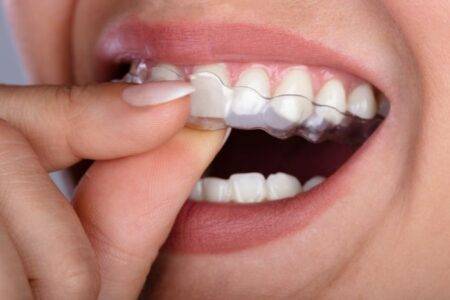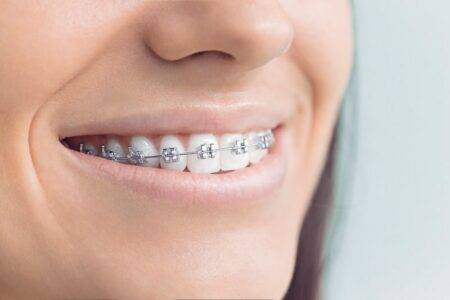Orthodontic treatment has evolved significantly, offering patients a choice between clear aligners and traditional braces. Both options aim to straighten teeth and improve oral health.
In this blog post, we will compare clear aligners and traditional braces, helping you understand their differences and make an informed decision about the right orthodontic treatment for you.
Clear Aligners: A Discreet and Convenient Option
Clear aligners are transparent, custom-made trays that gradually move teeth into alignment. They offer several benefits:
Aesthetics:
Clear aligners are virtually invisible, making them an ideal choice for those who desire a more discreet treatment option.
Removability:
Clear aligners can be easily removed for eating, brushing, and flossing. This allows for better oral hygiene and the flexibility to enjoy a wider range of foods.
Comfort:
Clear aligners are made of smooth plastic, reducing the chances of irritation or discomfort often associated with traditional braces.
Traditional Braces: Time-Tested and Effective
Traditional braces consist of metal or ceramic brackets affixed to the teeth, connected by wires.
They offer the following advantages:
Versatility:
Traditional braces are suitable for addressing a wide range of orthodontic issues, including complex cases and severe misalignments.
Predictability:
Traditional braces provide precise control over tooth movements, ensuring highly predictable treatment outcomes.
Compliance:
Unlike clear aligners, traditional braces are fixed to the teeth, eliminating the need for patient compliance in wearing them consistently.
Choosing the Right Treatment:
When deciding between clear aligners and traditional braces, consider the following factors:
Aesthetic preference:
If discreet treatment is important to you, clear aligners may be the preferred choice.
Treatment complexity:
Traditional braces are more versatile and effective for complex orthodontic cases.
Compliance and lifestyle:
Clear aligners offer the advantage of removability, but require consistent wear for optimal results.
Ultimately, it is essential to consult with an orthodontic professional who can evaluate your specific needs and guide you toward the most suitable treatment option.
Clear aligners and traditional braces each have their advantages in orthodontic treatment. Clear aligners offer aesthetics, removability, and comfort, while traditional braces provide versatility and predictability, and require less patient compliance.
Your orthodontist can help you make an informed decision based on your unique needs and treatment goals.




